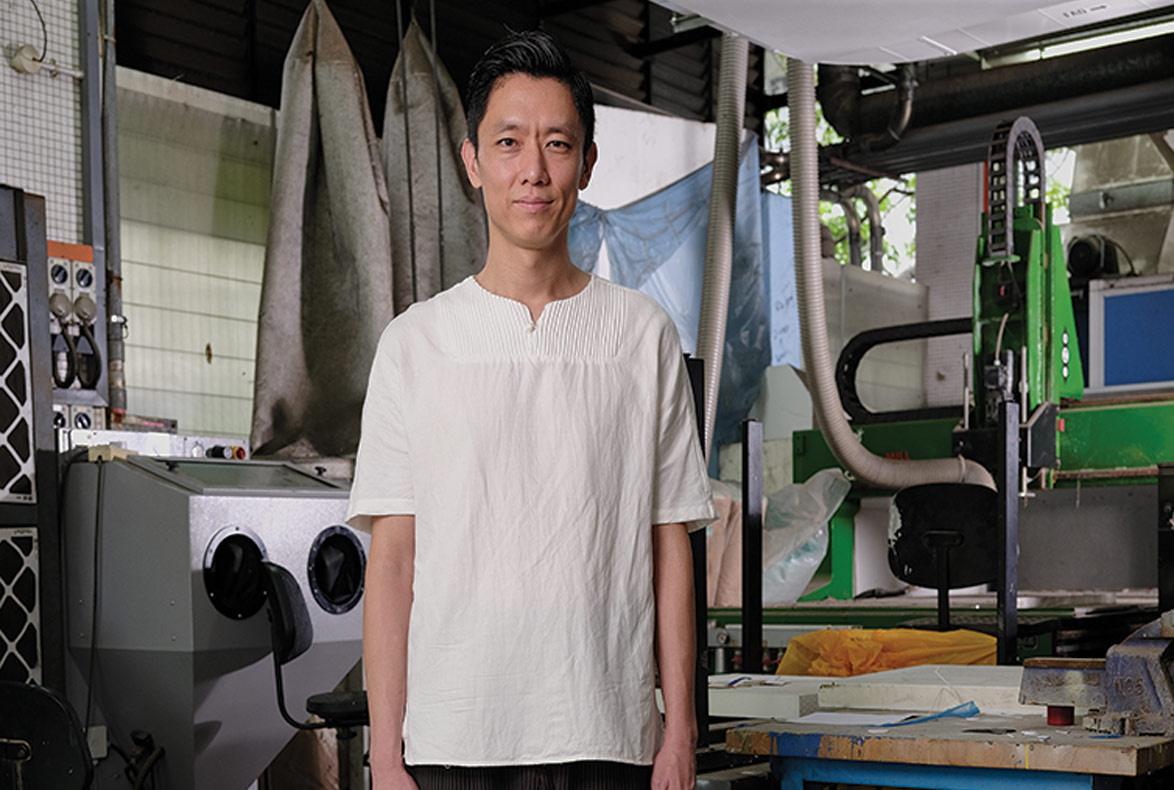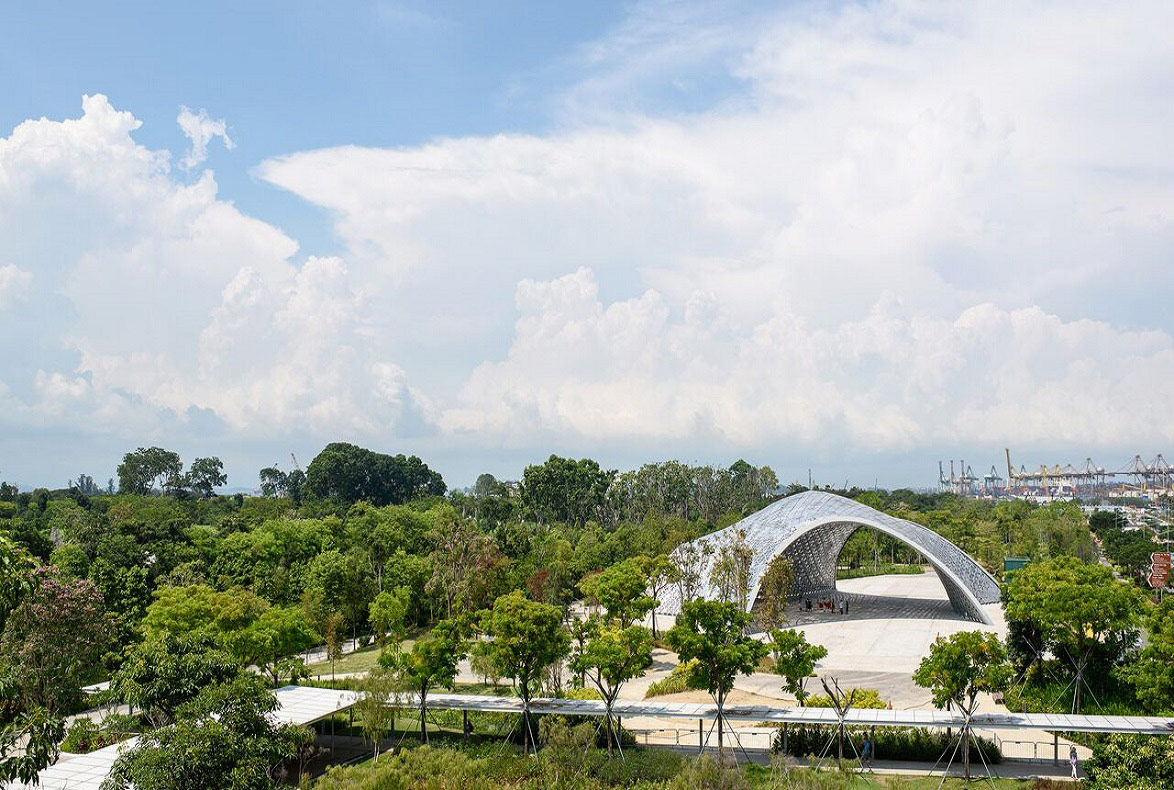* DESIGNER OF
THE YEAR 2011
Tang Guan Bee
Principal
Tangguanbee Architects
Experimentation is the definition of Tang Guan Bee’s architecture career.
As a teenager in the 1960s, he wanted to be an artist, but his parents dissuaded him because they did not think he would be able to make a living.
That was when Mr Tang made his first experiment in architecture, choosing to study this field in the then Singapore Polytechnic. “I didn’t know what architecture was about, and I found out it was a bigger canvas than I thought,” he says. “The artist canvas is kind of flat, but architecture is a living canvas, you actually build an art that people live in.”
After graduation, Mr Tang worked in several partnerships before starting his own studio, Tangguanbee Architects, in 1984. He wanted the independence to pursue his ideas and learn for himself the entire process of architecture. With close to five decades in practice, Mr Tang has developed a variety of architectural forms in Singapore under his studio, notably the original PictureHouse building, the house at Mountbatten Road, the Abelia Condominium, Eastpoint shopping mall, and The Market Place.
Each of these has been breakthroughs in his architecture career, says Mr Tang. They have been opportunities for him to test the limits of design, something that motivates him to take on any new project. “If a job has some grounds for experimentation and exploration, I will do it. When there is no challenge, I will say forget it,” he says. “I do not repeat a work.”
It is this spirit of risk-taking that led him to design his first hotel together with William Lim Associates. Completed in 2000, the Gallery Hotel was the first-of-its-kind boutique hotel that broke away from the cookie-cutter spaces of hospitality chains then, becoming a destination in itself.
Mr Tang remembers how they had to “transform” the client in order to come up with such a breakthrough design, even requesting him to travel overseas to see what the world’s best hotels were like. Persuading clients to trust him and take risks together is a persistent challenge in every design job, but Mr Tang finds it a crucial process in producing good design. “An architect who always says yes to the client is not an architect,” he says. “If you say yes to everything he says, he’ll find out that he doesn’t need you.”
His sustained belief in experimentation has won him recognition and respect from architects in Singapore and the world as one of the most avant-garde of his times. Both his Gallery Hotel and Eastpoint were nominated for The Aga Khan Award for Architecture in 2001. Mr Tang was also nominated for Innovative Architecture by the International Union of Architects in 2004. Back home, Mr Tang’s designs have won several awards from the Singapore Institute of Architects (SIA). He also became the fourth recipient of the institute’s highest honour in 2006, the SIA Gold Medal, given out only to architects who have made a lifetime contribution to society here.
Though risk-taking and experimentation are at the heart of Mr Tang’s design philosophy, he is also acutely aware of the architect’s responsibility to build for people. This drives his belief in the Japanese worldview of wabi-sabi, that there is beauty in imperfection. “Most architects will look at forms and shapes and never look inside to see how someone lives,” he says. Spaces must allow for human intervention. “When you don’t allow someone to experiment in their own spaces, you create a house that is like a showroom, where everything is so clean and no one dares to touch anything.”
He also firmly believes in the need for architecture to be sensitive to the environment. While going ‘green’ is a given today, Mr Tang reminds us that it has not always been the case. He points to his Abelia condominium and the never-built Eco-Housing designs, green and open architecture forms that were not conventional back in the 1990s and early 2000s. “People want to build utopian architecture, I want to build an ‘eco-topia’ instead, where my buildings are ecologically-friendly and porous,” he says.
This relentless pursuit of a better architecture form is what has driven Mr Tang through such an illustrious career. The city of Singapore has been pivotal in this, exposing him to his early clients who had a lot of faith in him although he was nothing then, he says. Through his work here, Mr Tang has gone on to design architecture in the region including Malaysia, Hong Kong and China.
Despite his busy career as an architect, Mr Tang has also found time to contribute to the development of Singapore’s architecture scene as an external examiner and visiting critic in the architecture department of the National University of Singapore and as a council member of the SIA. He is currently a Board Member of the Board of Architects too. Mr Tang also continues to nurture his love for art by painting and serving as a member of the fine art curriculum development advisory committee of the Nanyang Academy of Fine Arts.
The pioneer architect who has seen Singapore’s design scene grow over the years from nothing, believes there is a need for more invention to keep it alive. After all, experimentation and discovery through architecture is what keeps the 70-year old designing after all these years. He says. “Architects or designers or artists never retire, they just die.”
READ MORE
Insights from the Recipient
Citation
Jury Citation
Tang Guan Bee is one of the most respected and inventive architects in Singapore and the Jury is amazed at his youthful, infectious energy and strong passion for design. Following his own beliefs, he approaches each project with his unique set of values and styles. His extensive body of work showcases elements of great experimentation and bold expressions of forms, colours and materials.
Possessing a quirky attitude and easy charm, Guan Bee is often admired for his ability to follow through his visions — at times, breaking conventions and setting new standards. He derives tremendous joy in working with the younger generation of architects and is an inspiration to them.
The Jury applauds Guan Bee’s steadfast passion for architecture and the significant contributions he has made to the profession throughout his many years of practice, both as a practitioner and as a mentor.
VIEW JURORS
Nominator Citation
RANDY CHAN KENG CHONG
PRINCIPAL
ZARCH COLLABORATI VES PTE LTD
I had the privilege of working with Mr Tang Guan Bee as an intern from 1994 to 1995. Since then, he has been a mentor, a friend, an artist, an architect, and a drink companion all rolled into one.
To work in his office was a unique opportunity indeed. We were literally told to dream the impossible and work through exercises to learn about how he saw the world and architecture around us. Meetings, issues on sites, and correspondences were never part of the intern experience.
Whether it was using a can of Coca Cola to represent the drum of a building or an acrylic tube for a tunnel, an impromptu intervention from him is always intriguing. He made the irrelevant become a relevant lesson.
Mr Tang’s passion for architecture has never wavered. He is talking about it from morning to night. Every day, he would give us an anecdote about what was going on in the world and how it related to an architect’s work. It was like a source of daily bread to us. He is rigorous in that sense.
He got me to understand that it was not enough to have good stamina to be an architect, but one’s attitude and aptitude about the practice of everyday life is more important.
As an architect, Mr Tang has given colours and variety to our buildings. His forms and spaces are playful, always intuitive, and never dull. But his legacy is not about what he thinks design or architecture should be. Instead, he is imbued with an intrinsic value of architecture practice: that there must be joy in making it. This is the creative process and ability to enjoy the act of creating and doing architecture from without.
As a friend, Mr Tang generously supports anyone who needs advice. Whether he is meeting artists, students or young architects-to-be, he is always willing to share his experiences and provide the platform for collaborations.











